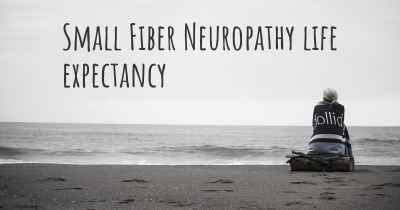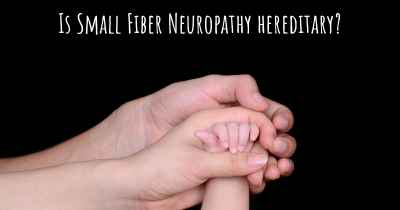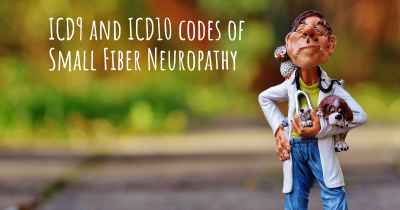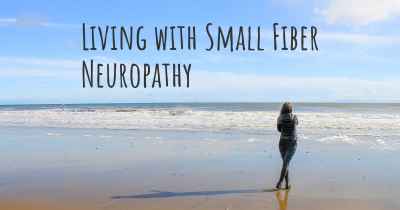How is Small Fiber Neuropathy diagnosed?
See how Small Fiber Neuropathy is diagnosed. Which specialists are essential to meet, what tests are needed and other useful information for the diagnosis of Small Fiber Neuropathy
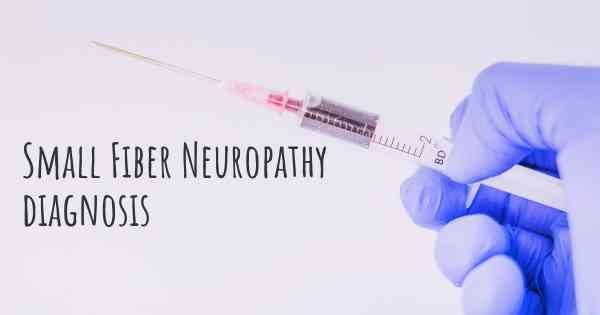
How is Small Fiber Neuropathy diagnosed?
Small Fiber Neuropathy (SFN) is a condition that affects the small nerve fibers in the peripheral nervous system. These fibers are responsible for transmitting sensory information, such as pain and temperature, from the skin to the brain. SFN can cause a range of symptoms, including burning pain, tingling, numbness, and sensitivity to touch.
Diagnosing SFN can be challenging because the symptoms are often nonspecific and can overlap with other conditions. However, there are several diagnostic tests and procedures that can help confirm the presence of SFN and rule out other possible causes.
Medical History and Physical Examination
The first step in diagnosing SFN is a thorough medical history and physical examination. Your doctor will ask about your symptoms, their duration and progression, and any factors that may have triggered or worsened them. They will also inquire about your medical history, including any underlying conditions or medications that could contribute to nerve damage.
During the physical examination, your doctor will assess your sensory function by testing your response to various stimuli, such as light touch, pinprick, and temperature. They may also check your reflexes and muscle strength to evaluate the overall function of your peripheral nerves.
Skin Biopsy
A skin biopsy is a minimally invasive procedure that can provide valuable information about the density and structure of small nerve fibers in the skin. During the procedure, a small piece of skin, usually from the lower leg, is removed and examined under a microscope.
In SFN, the skin biopsy may reveal a reduction in the density of small nerve fibers or other abnormalities, such as nerve swelling or degeneration. This test is particularly useful for diagnosing SFN when other diagnostic methods have been inconclusive.
Nerve Conduction Studies (NCS)
Nerve conduction studies (NCS) are commonly used to evaluate the function of large nerve fibers. However, they may also provide some information about small fiber involvement in SFN. During NCS, small electrical impulses are applied to specific nerves, and the speed and strength of the nerve's response are measured.
In SFN, NCS may be normal or show only mild abnormalities since it primarily assesses large nerve fibers. Therefore, NCS alone is not sufficient to diagnose SFN definitively, but it can help exclude other nerve-related conditions.
Quantitative Sensory Testing (QST)
Quantitative sensory testing (QST) is a non-invasive procedure that measures the response to various sensory stimuli, such as heat, cold, and vibration. It assesses the function of both large and small nerve fibers and can provide valuable information about the extent and pattern of sensory dysfunction.
In SFN, QST may reveal abnormalities in thermal and pain thresholds, indicating small fiber involvement. However, it is important to note that QST results can be influenced by factors such as age, sex, and psychological state, so they should be interpreted in conjunction with other diagnostic findings.
Autonomic Testing
Small fiber neuropathy can also affect the autonomic nervous system, which controls involuntary bodily functions such as heart rate, blood pressure, and digestion. Autonomic testing involves various procedures to assess autonomic function, including heart rate variability analysis, sweat testing, and blood pressure monitoring.
If SFN is suspected to involve autonomic fibers, autonomic testing can help confirm the diagnosis and evaluate the severity of autonomic dysfunction.
Blood Tests
Although there is no specific blood test to diagnose SFN, certain blood tests can help identify underlying conditions that may cause or contribute to nerve damage. For example, blood tests can detect markers of inflammation, autoimmune disorders, vitamin deficiencies, or metabolic abnormalities.
Additionally, genetic testing may be considered in some cases, especially when hereditary neuropathies are suspected.
Other Diagnostic Procedures
In some cases, additional diagnostic procedures may be necessary to rule out other potential causes of neuropathy or to further evaluate nerve function. These may include imaging studies, such as magnetic resonance imaging (MRI) or nerve ultrasound, or specialized nerve tests, such as microneurography or laser-evoked potentials.
It is important to note that the diagnostic process for SFN can be complex and may require the expertise of multiple specialists, such as neurologists, dermatologists, or pain specialists. A comprehensive evaluation, including a combination of different tests, is often necessary to reach an accurate diagnosis.
Conclusion
Diagnosing Small Fiber Neuropathy involves a combination of medical history, physical examination, and various diagnostic tests. Skin biopsy, nerve conduction studies, quantitative sensory testing, autonomic testing, and blood tests are among the key procedures used to confirm the presence of SFN and exclude other potential causes. The diagnostic process may require the involvement of multiple specialists and a comprehensive evaluation to ensure an accurate diagnosis.
Depending on the local area - the most common, nondisputed way is a punch biopsy of the skin (2 min.) which is a small 3mm circle "hole punch" on your leg and back of your thigh. They send these to a special lab who should know what they are doing and then count and cross-reference the nerve count thus providing physical evidence backed diagnosis.
Posted Sep 29, 2018 by Brian 1350
Posted Jul 12, 2021 by Jo 3150
Posted Feb 3, 2022 by Mark 2000
Posted Apr 17, 2022 by Nadine123 100
